If the West were to have a mascot, it’d be either the cowboy or the cutthroat trout. No two icons more accurately portray the fighting spirit — the true grit — that has defined the American West for all these years.
Both the cowboy and the cutthroat trout are emblematic of our great Western heritage, and while honest-to-goodness cowboys are a somewhat rare find these days, cutthroat trout are in even more danger of disappearing.
“Over decades and decades, we’ve had everything from habitat destruction to illegally introduced fish, just a whole slew of problems where it’s caused concern of the future potential of losing this fish,” Bryan Englebert, regional sportfish biologist for the Utah Division of Wildlife Resources (UDWR), said to me one July afternoon while in Utah’s Uinta Mountains.
The Uintas, Utah’s preeminent high country, are home to two subspecies of cutthroat - the Bonneville and Colorado River. Both fish call Utah’s highest peaks home, and before settlers moved West in the 1800s, they thrived in the many streams and lakes found in the Uintas.
However, these days cutthroat are struggling to survive in their native streams as they compete with invasive species. Brook and brown trout are abundant in former cutthroat habitat, over-populating and out-competing native fish. The UDWR itself is responsible for stocking diploid rainbow and Yellowstone cutthroat trout on top of pure-strain Colorado River cutthroat populations years ago, a mistake the agency is now trying to fix.
But true to their resilient Western spirit, Utah’s native cutthroat aren’t giving up in the face of these challenges - and neither are the people that care about them.
Massive efforts are underway in every state home to cutthroat trout to protect and preserve these important fish. Yellowstone National Park is considering eradicating fish in Soda Butte Creek to restore native Yellowstone cutthroat. Anglers in Colorado are coming together to save the 750 remaining Greenback cutthroat trout that exist in the world.
Out here in Utah, similar efforts are underway to ensure that cutthroat can thrive once again in their historic native ranges.
In July, I was able to go out with a team of biologists from the UDWR and see their cutthroat conservation efforts up-close and personal. I accompanied the UDWR biologists as they sampled two streams - the Lake Fork River and Rock Creek - for existing populations of Colorado River cutthroat trout.
“Our activities are trying to reestablish and expand the range of Colorado River cutthroat trout, so we don’t lose that vital part of our heritage,” Englebert, a member of the UDWR biologist team, said as we stopped for a break along Rock Creek. “A big problem that we have in this region is [cross-breeding] with nonnative fish, mainly rainbow trout and Yellowstone cutthroat trout,[as well as competition] from brown trout and especially brook trout in our region.”

The brown trout are certainly a problem. While sampling the Lake Fork River, the biologists netted a brown that measured 23 inches long. Mind you, the majority of the trout in Uinta streams reach an average size of about 10 inches. Seeing a 23-inch trout in the Uintas, let alone a brown, was something I’m not afraid to call a once-in-a-lifetime experience.
That brown was the only fish, aside from a few sculpin, that the biologists netted on the Lake Fork River. So we packed up shop and headed over to Rock Creek, hoping that particular remote stream would be home to the cutthroat we were looking for.
It may seem a bit excessive, for a half-dozen biologists to be spending all this time and money on something as simple as a fish. In fact, non-anglers and casual fishermen may not even fully comprehend what all the fuss is about when it comes to cutthroat conservation. So really, what is all the fuss about?

From an ecological standpoint, restoring cutthroat to as much of their native range as possible is imperative. If a stream isn’t healthy, full of the fish that belong there, it can have a negative impact not only on the stream but also the surrounding environment.
“It plays into everything from avian, terrestrial, ecological concerns,” Englebert said. “[Look at] osprey. These are species of predator that can adapt to other prey species, but it’s just not right. We want everything to play into its right role.”
That’s really the guiding light behind conservation efforts worldwide - getting nature back in harmony as much as possible in the face of a burgeoning population.
These conservation efforts are also a large reason that we’re able to enjoy cutthroat trout as a sport fish. Cutthroat trout have been petitioned to be listed for protection under the Endangered Species Act multiple times. If that day ever comes, fishing opportunities for the West’s native fish will be drastically reduced.

Since the cutthroat isn’t listed under the Endangered Species Act, states have a bit more freedom in how they manage that particular trout.
“We can be flexible right now with our management principles and the way that we manage [cutthroat],” Englebert said. “So we’re doing everything we can to conserve them, both from a conservation and a sport fish perspective.”
While most anglers understand the importance of conservation, it’s still an activity that gets a bad rap from time to time. There are plenty of people who say the money spent is wasted and we’re not really making much of a difference. But after watching the UDWR biologists sample Rock Creek for cutthroat, I beg to differ.

As the biologists stumbled, slipped, and fell through the tight confines of Rock Creek, they netted fish after fish, dumping them into livewells for further inspection. The fish were all small, about 7 inches at the largest, but they were all wild, pure-strain Colorado River cutthroat trout.
The classic Colorado River spotting pattern was evident on all the fish, as well as the bright jaw slashes that give the trout its name. They were carefully counted and measured before being released back into the rush of cold, clear water they call home.
The presence of those cutthroat there, in that tiny mountain stream, is evidence of just how big an impact conservation efforts are having on bringing fish back to where they belong. Thanks to conservation efforts like the ones I saw by the UDWR, anglers like ourselves are able to go out across the West and catch cutthroat with regularity. These great Western streams are starting to look a lot more like their old selves, and everyone - from anglers to ospreys - is reaping the benefits.







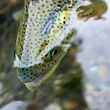




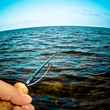



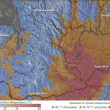
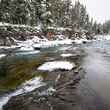












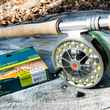
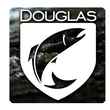
Comments
Jim Rauch replied on Permalink
Very nice article, Spencer. I lived in Utah for a year and a half in 1966 and we camped in the Uinta's. I remember catching cuthroats in the lakes that were among the prettiest fish I ever caught.
Spencer Durrant replied on Permalink
Thanks, Jim! Yeah, the Uinta cutts may be the prettiest in the entire state. Although, I have caught some in the Fish Lake area that rival the Uintas!
Kristal replied on Permalink
These are amazing pictures, and a wonderful editorial.
Spencer Durrant replied on Permalink
Thank you very much! I really appreciate that!
Pages